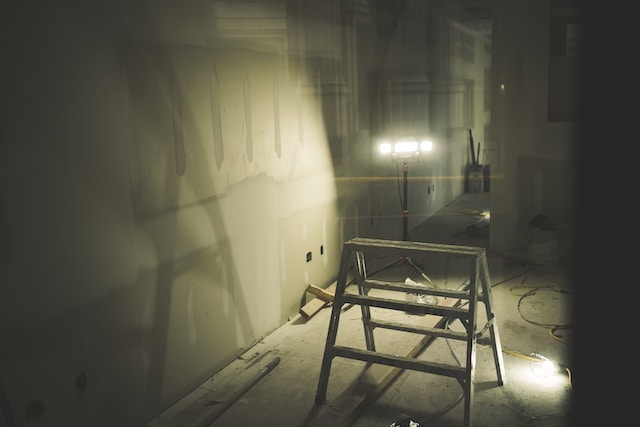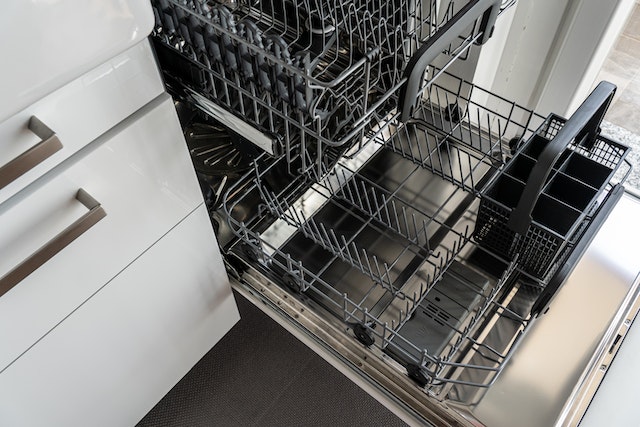Whether you’re a homeowner or a shopkeeper, your building is one of the most valuable assets you have. It protects you from the elements, houses all your most important belongings, and serves as a gathering place for all your essential activities, whether those are commercial or recreational.
Buildings of all shapes and sizes are prone to a number of different issues, one of which is water damage. This insidious destroyer often starts small, growing over time as you fail to notice the indicators that something is awry; it can also occur in any area of the house, but is especially prevalent in small, overlooked places that you might miss during your regular cleaning routines.
Water damage can be caused by a number of different issues, from a leaky pipe to an improperly sealed foundation that is allowing groundwater to seep up. Interior walls are most vulnerable around doors and windows, as the slightest crevice between wall and entrance can allow rainwater and humidity inside. Essentially, anything that brings walls into repeated contact with moisture over an extended period of time will wear away at the integrity of the wall, creating issues such as rot, mold, and even structural damage.
Just as there are numerous different causes of water damage, there are a variety of signs it is occurring, too. Should you ever see any of the following symptoms, get in touch with a well-respected Portland water damage restoration team as soon as possible.
Damaged paint or wallpaper is often the first indicator that something is amiss
While a few scuffs from roughhousing kids aren’t anything to worry about, staining that can’t be explained by everyday activities should put you on the alert for further issues. Look specifically for yellow or brown patches, which often indicate small deposits of rust or other minerals from inside leaking pipes. Similarly, if you notice that your paint is peeling, cracking, or bulging, it often means that moisture has weakened the integrity of the paint, causing it to come free of the wall surface.
Wallpaper isn’t immune to water damage, either: it will also start to pull away from the wall if it grows wet, as it is adhered to the surface with strong adhesives. Look for peeling, bubbling, or discoloration in the paper, as well as if it is moist to the touch.
Give your drywall a checkup to hunt down water problems
When it comes to plaster and drywall, any warping or bulging means that moisture is swelling the material, which makes it push out from its moorings. Streaky discolorations says that moisture is running down from the wall; this could be due to leaky pipes which are seeping through the walls and leading to condensation.
Drywall may become soft, spongy, or crumbly when it has been compromised by water, and plaster can begin to crack and flake. Gently touch the surface to see if it feels soft in any areas; both drywall and plaster should always feel firm to the touch and resonate when you knock on it.
If you notice a white powdery substance coming off in your hand, this may not be damaged drywall, but another indicator of water damage: efflorescence. While this sounds like a synonym for “fluorescence,” it actually describes salt deposits left when water interacts with your wall’s materials and subsequently evaporates. This tells you that your wall is being slowly worn away by water, leaving buildup of this negative interaction.
A hint of mold means you need to call a remediator
Do you notice a distinctive musty odor whenever you head down to the basement? Is there a funky patch of brown or green sneaking down the wall? This is mold, which thrives in moist environments like a water-damaged corner.
Not only is mold a potential health hazard, but it also spells big trouble for your home itself; that’s because fungi are some of the world’s most prolific and efficient decomposers, meaning that they break down organic materials. While this is a great thing in its proper place, such as on a dead tree stump or inside the soil, mold doesn’t discriminate when it comes to dinner: it will eat away at your walls, which can lead to major structural damage over time. Mold indicates that there is a leak nearby, or that the area does not have adequate dehumidification and ventilation, both of which should be diagnosed and addressed by professionals.
Don’t forget to check at ground level, too
Like everything else, water travels downward, and so it will begin to pool around the bases of walls. This can cause swelling, warping, and discoloration around the baseboard or skirting of your wall; in fact, the damage is often worse here, as the water will get trapped here and thoroughly penetrate all available materials.
Even if you don’t see immediate issues on the walls itself, regularly examine your skirting to check whether you notice discoloration, mold growth, or beading precipitation. This usually means that there’s a drip further above, but that the damage hasn’t grown so obvious that you can identify it near the source.
The signs and symptoms of water damage vary, the fix remains the same: calling a professional remediation company
Water damage is insidious, and if it is not properly addressed, it will continue to cause issues for you and your family, potentially requiring thousands of dollars in repairs. While it’s tempting to think that you can just paint over a damp patch, spray away the mold, or replace a bulging baseboard, this is just a bandaid over a more serious issue.
A water damage restoration company has the tools necessary to diagnose the source of water damage, promptly address it, and treat the side effects of the problem, such as mold and compromised drywall. Given that the consequences of leaving water damage unchecked can be so severe, repair and restoration should be left to those with the tools and know-how to properly manage the problem.



